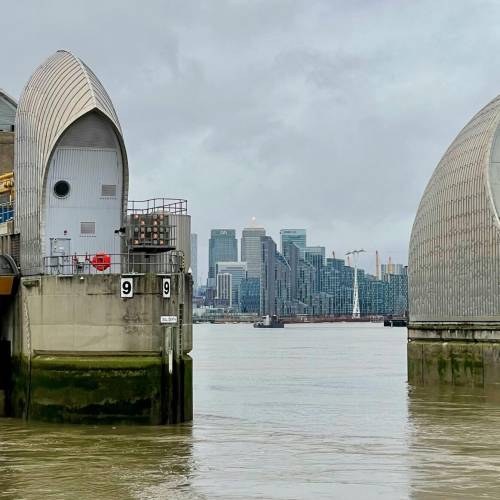DM provided a joint Land Agency and Environment & Planning service to our client to facilitate the timely commencement of works on a new c.4 km potable water pipeline within the Chilterns and ensure all correct legal agreements, including confirmation of permitted development rights, were in place.
Overview
Through early engagement with us, our client was able to understand potential environmental and planning constraints to the installation of a new, c.4km water pipeline in the Chilterns. The new pipeline is required as a result of the local construction works for HS2; this installation is essential to ensuring the continued supply of high-quality drinking water to our client’s customer base.
The proposed location is sensitive, and the scheme was found to have several complex interactions with the environment which if not considered at the early design stage could have detrimental impacts. The site is located within the Chilterns Area of Outstanding Natural Beauty (AONB) and within the floodplain of the River Misbourne, a chalk river highly sensitive to varying groundwater chemistry and level. In addition, we established that the location was crossing through two Archaeological Notification Areas, a local designation which was not known to the client following their own high-level, brief review of environmental constraints.
Our advice to the client was that due to the environmental sensitivity of the landscape, the scheme was required to be EIA screened by Buckinghamshire Council (formerly Chiltern District Council). In doing so, if the council screened out the scheme (non-EIA decision), it would effectively confirm our client’s permitted development rights.
Given the association of the scheme with HS2, and the sensitive landscape, we prepared a robust justification, grounded in environmental and technical data which presented the argument to the council that the scheme was indeed non-EIA.
Challenges/Constraints
The landscape into which the new raw water main was to be installed is subject to a number of environmental constraints, any of which, if not addressed appropriately in the screening opinion request documents, could have resulted in the LPA concluding that full environmental assessment was required due to the risk of significant effects.
Constraints included:
- the Chilterns Area of Outstanding Natural Beauty (AONB)
- the London Area Green Belt
- archaeologically sensitive Areas
- the adjacent River Misbourne (flood and pollution risk)
- the ground water-bearing aquifer underlying the area
- the ecology and biodiversity of the area
In addition, association with the HS2 railway line project added an extra layer of scrutiny due to the controversial nature of that project and its own potential for significant impacts on the environment. Our client was also required to ensure the continued supply of safe drinking water to local residents by a deadline embedded within HS2’s own tight construction programme. Therefore, we were challenged to confirm permitted development rights for the scheme, whilst managing ecological and archaeological investigations within a difficult timeframe that was also pressurised by the implications of the first lockdown due to the global Covid-19 pandemic.
The unique nature of the works package required DM to provide specialist advice on delivering works whilst adhering to the relevant legislation in terms of land access, planning and environmental matters giving consideration to the Water Industry Act, Town and Country Planning framework including the General Permitted Development Order and Environmental Impact Assessment Regulations as well as rigorous High-Speed Rail Act.
Actions and Approach
Due to the environmental sensitivity of the area, it was agreed with our client a strategy of engagement and consultations with the LPA, statutory consultees (including the Environment Agency) and other stakeholders (including the Chilterns AONB Review Group) followed by the submission of a robust and thorough EIA Screening Opinion Request would be the best approach and most likely to result in the required ‘non-EIA’ determination for the project.
These discussions provided an increased understanding of the environment for the project team and highlighted a number of areas of the project where improvements could be made, or mitigation measures introduced to limit the impacts and effects on the environment. We were able to manage already-instructed ecology surveys and provide additional guidance to our client on the necessity for an additional archaeological investigation.
Through our coordination, we built a robust case that the proposals, albeit within the sensitive landscape would not cause permanent or significant negative impacts on the environment. We presented these to the local planning authority and liaised directly with both the case officer and technical officers to assure them that the project should not be determined as EIA development. Given the nature of the works, the council requested additional technical information to support the Screening Opinion Request including; additional statements regarding the measures to ensure the protection of the water levels and quality of the nearby chalk stream, potential cumulative impacts especially associated with the nearby HS2 construction works, a qualitative carbon assessment, assurances that appropriate archaeological mitigation will be undertaken as part of the works. DM was able to coordinate the production and transfer of these documents whilst maintaining regular contact with the case officer in order to manage expectations and negotiate timescales as required.
The progress of the scheme, especially relating to the environmental and planning aspects, were at risk of being severely impacted by the introduction of the first lockdown in March 2020. However, thanks to DM’s long-term investment in systems and software to facilitate immediate agile working, there was no down-time on the project whilst nationally we adjusted to working remotely. We instigated remote, conference working for our client, the Council and consultees and interested parties who were invited to assist in the decision-making. We hosted several video conference calls in order to discuss the project, mitigation measures and ensure all party’s expectations were met. As a result, the non-EIA decision was made in a suitable time to initiate the works to accommodate the HS2 construction programme.
Archaeologists from DM have continued to provide an advisory role to the on-ground archaeology team separately instructed by our client and have maintained communications with the County Archaeologist ensuring that requisite commitments made in the agreed method statement are met.
Results
The scheme was screened out (determined to be non-EIA) by the planning authority who also acknowledged the fact that as a result, the works were being completed under our client’s permitted development rights. We committed to providing further information, especially with regard to consented activity permits in relations to works in the floodplain and also ongoing engagement with the County Archaeologist.
Without DM’s involvement and management of the technical information as well as stakeholder management of the planning authority and consultees, there was a risk that the scheme could be determined to be EIA development. In that event, that could have had a catastrophic impact on the construction programme of the new pipeline, but also of the HS2 Chiltern Tunnel.
DM has since been asked to be involved in other major schemes for the client including outstanding schemes to accommodate the construction of HS2.
Sector
Transport and Infrastructure
Location
Chalfont to Amersham
How we helped
Land Agency and Environment & Planning
Get in touch








